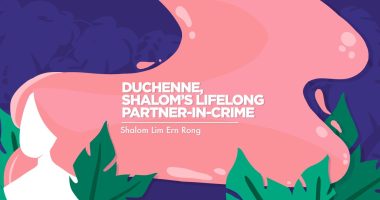Disability Inclusion Movements Must Include the Rarest of the Rare
The importance of embracing marginalized groups within the disability space
by |

I celebrated my 27th birthday on Oct. 25 and feel tremendously blessed to have made it this far, especially with Duchenne muscular dystrophy. Duke (my pet name for Duchenne) has taken me through many arduous trials and difficult times, including feeling marginalized within my own disability community.
Still, I’m much better for it and have emerged stronger from those testing waters. Going through the school of hard knocks has enabled me to truly appreciate life. It has also given me a lot of pride and joy and empowered me to accept who I am as a person with multiple debilitating disabilities and impairments. This roller coaster ride has never been easy, making my life all the more enjoyable and thrilling.
Overlapping disabilities
I was diagnosed with Duchenne in March 1996 when I was only a few months old. My brother, Isaac, had been diagnosed with the same disease at birth a few years earlier, and was later diagnosed with high-functioning autism. Isaac was also nonverbal due to a speech and language disability.
Fast forward to a few weeks ago, and I was diagnosed with inattentive attention-deficit/hyperactivity disorder (ADHD) by a clinical psychologist. This was a huge relief, as I’ve always struggled with my ability to focus, manage time, and submit assignments and homework without parental guidance and supervision.
I’ve also always felt like I can hear another voice in my head, one that comes from deep within my soul, whenever I’m alone or lying down in bed. My teachers always said I was a bright child capable of greater excellence were it not for my frequent, careless mistakes and lapses in concentration. Growing up, I could only hyperfocus on math, soccer, and video games, which captured most of my attention.
Nine days after the psychologist diagnosed me with ADHD, I went to see my pediatric neurologist for a routine follow-up session at the Khoo Teck Puat–National University Children’s Medical Institute in southern Singapore. My neurologist confirmed my ADHD diagnosis, telling me it was to be expected since my brother and I had the same genetic profile.
Most people in Singapore only recognize muscular dystrophy as a medical condition that causes physical health problems and severe mobility impairments. They don’t realize that it can be associated with neuropsychiatric conditions and learning disabilities. Rare diseases are still very much underrecognized globally.
On Oct. 29, Singapore celebrated its 10th annual Purple Parade, the area’s largest celebration of the diverse abilities, gifts, and talents that people with disabilities possess. While my friends at the Muscular Dystrophy Association (Singapore) attended in earnest to represent the organization, I did not.
Singapore had just been hit with a wave of COVID-19 cases driven by the new XBB subvariant. Plus, I had barely escaped death in July when I had severe dengue. I can ill afford to get COVID-19, which could mean another harrowing hospitalization and near-death experience.
Singapore’s disability inclusion movement has largely been driven by the rise in autism diagnoses over the last decade. Most autistic people I know don’t live with mobility impairments. I’m not discounting the struggles they face, but this often leaves autistic and neurodivergent people who have mobility issues marginalized within Singapore’s mainstream disability space.
Diversifying the disability inclusion movement
I feel the time is right for Singaporean survivors of rare neuromuscular diseases, such as SMA News Today columnist Sherry Toh and myself, to speak up on behalf of our community. Until now, our collective voice has been largely male and driven by caregivers.
I recently read about a French woman named Feriel Chebba who has Duchenne MD. Women and girls with Duchenne don’t receive the same support as men and boys with the condition, due to the huge disparity in incidence. (It’s estimated that Duchenne affects one in 50 million women and one in 3,500 men).
If those of us with disabilities truly want to be included, we must accept and embrace those who are less visible — the rarest of the rare. Inclusion must start within ourselves. Only then can all people with Duchenne take their place in the world.
Note: Muscular Dystrophy News is strictly a news and information website about the disease. It does not provide medical advice, diagnosis, or treatment. This content is not intended to be a substitute for professional medical advice, diagnosis, or treatment. Always seek the advice of your physician or another qualified health provider with any questions you may have regarding a medical condition. Never disregard professional medical advice or delay in seeking it because of something you have read on this website. The opinions expressed in this column are not those of Muscular Dystrophy News or its parent company, BioNews, and are intended to spark discussion about issues pertaining to muscular dystrophy.









Comments
Ellen Fong Koch
I just want to say thank you for your articles. My 4 year old daughter was recently diagnosed with Collagen 6 congenital muscular dystrophy. Reading your point of view about the disease and life with it brings me comfort as I hope the disease does not limit her from reaching her full potential. Thank you for speaking so candidly and for representing and advocating the disabled community.